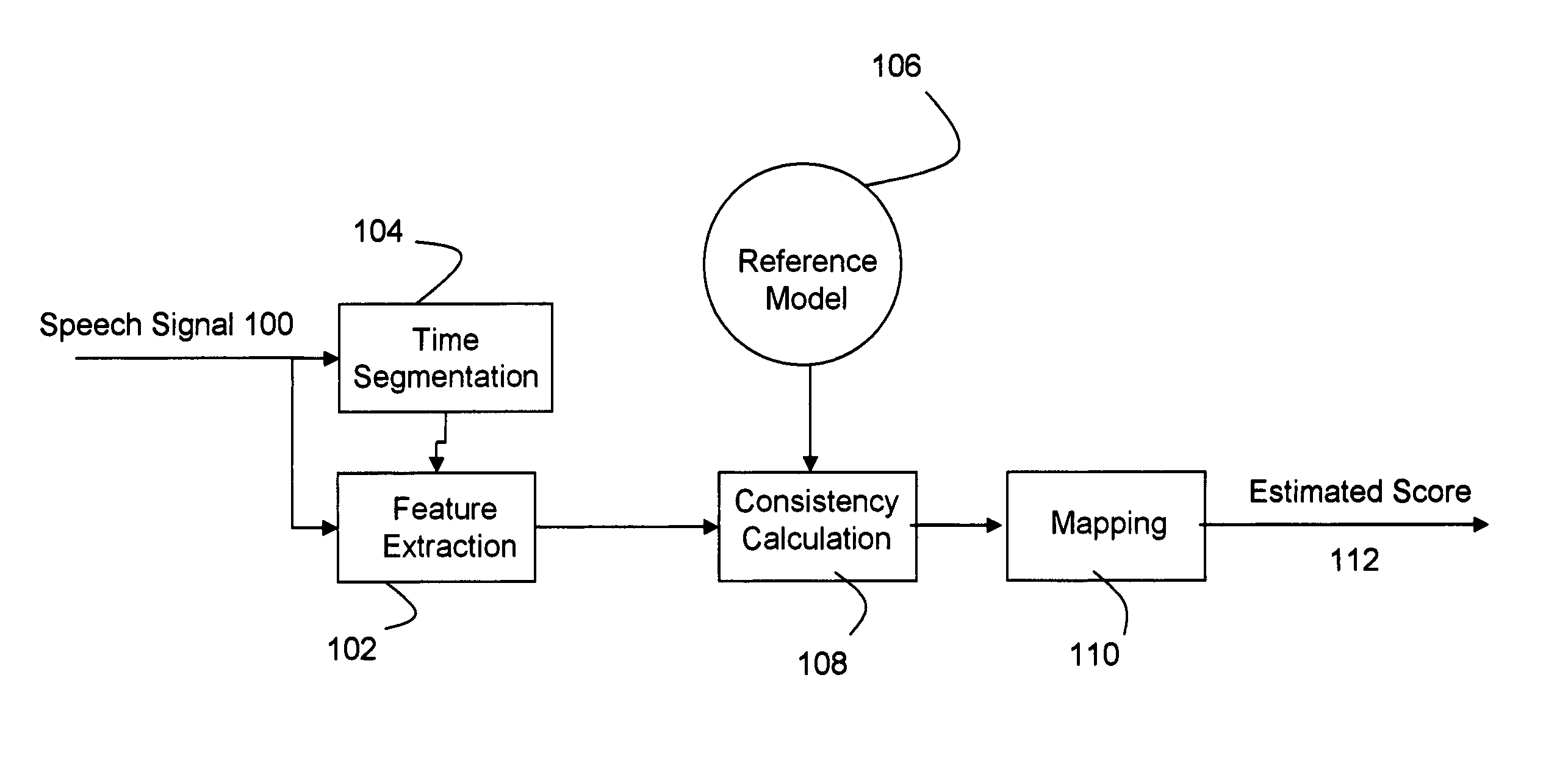Single-sided speech quality measurement
a speech quality and single-sided technology, applied in the field of single-sided speech quality measurement, can solve the problems of difficult to provide both the clean signal and the received speech signal, time-consuming and costly subjective listening tests, and difficulty in anticipating how people will perceive speech quality, so as to reduce processing time, reduce processing requirements, and reduce the effect of significant performance degradation
- Summary
- Abstract
- Description
- Claims
- Application Information
AI Technical Summary
Benefits of technology
Problems solved by technology
Method used
Image
Examples
Embodiment Construction
[0009]FIG. 1 illustrates a relatively easily calculable non-intrusive measurement technique. The input is a speech (“test”) signal for which a subjective quality score is to be estimated (100), e.g., a speech signal that has been processed by network equipment, transmitted on a communications link, or both. A feature extraction module (102) is employed to extract perceptual features, frame by frame, from the test signal. A time segmentation module (104) labels the feature vector of each frame as belonging to one of three possible segment classes: voiced, unvoiced, or inactive. In a separate process, statistical or probability models such as Gaussian Mixture Models are formed. The terms “statistical model” and “statistical reference model” as used herein encompass probability models, statistical probability models and the like, as those terms are understood in the art. Different models may be formed for different classes of speech signals. For instance, one class could be high-qualit...
PUM
 Login to View More
Login to View More Abstract
Description
Claims
Application Information
 Login to View More
Login to View More - Generate Ideas
- Intellectual Property
- Life Sciences
- Materials
- Tech Scout
- Unparalleled Data Quality
- Higher Quality Content
- 60% Fewer Hallucinations
Browse by: Latest US Patents, China's latest patents, Technical Efficacy Thesaurus, Application Domain, Technology Topic, Popular Technical Reports.
© 2025 PatSnap. All rights reserved.Legal|Privacy policy|Modern Slavery Act Transparency Statement|Sitemap|About US| Contact US: help@patsnap.com



